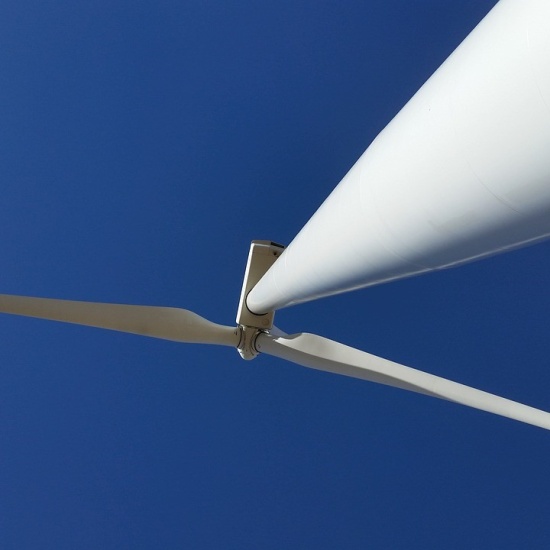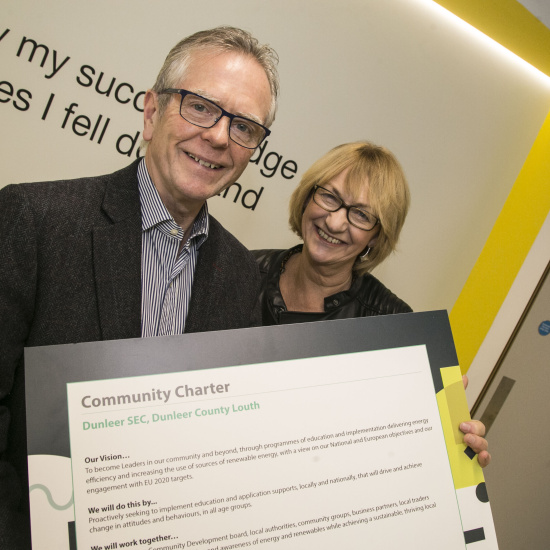Sail Rail to London
Head of Business Supports and Transport Fergus Sharkey shares a write-up of his 'Sail Rail' journey from Dublin to London to attend a training course, involving cycling, taking the ferry and the train as an eco-friendly alternative to flying.
"Flugscham" is a German term which literally means "Flight Shame". The term has been associated with climate activists like Greta Thunberg who have taken the avoidance of flights to epic heights by sailing across the Atlantic Ocean. I think most readers will naturally understand the term; that slightly unnerving feeling that the climate impact of your flight is higher than you would really be comfortable with.
Of course, flying has rebounded significantly since a short suspension during COVID. But in a connected world, and as an island nation, the need for flying will not abate quickly. Alternatives are available, not least remote meeting technology which has permeated our lives during the pandemic.
But when we need to be face-to-face, are there viable alternatives to flying?
I don't do a huge amount of flying either with work or in my personal life, but when it is required, I often wish I had a viable alternative. To quell my Flugscham, and out of personal interest, I recently took the slow route to London.
This was quite the journey (literally bike-train-taxi-ferry-bus-train-underground) to get to a training course in London that I really had to attend in person. My experience shows there is indeed a viable, and even preferable (!) alternative to a flight. With some improvements it could become among the mainstream options for travel to the UK, and even mainland Europe.
The Journey
I left my house in Skerries just after 6am, biked to the station and caught a train to Connolly. From there, the link to Dublin Port is not great (there is a 53 bus, and a private bus), but a taxi was really the only option with my timings. This link (Dublin City to the Port) is the least integrated part of the trip. I arrived for the 8.05am ferry at 7am, possibly a bit early, and was onboard by around 7.30.
The ferry was comfortable and spacious and a great way to travel (I have a lot of fond memories of the ferry from when I was a kid, and now with my own family). I was able to get a good breakfast for €10 and paid €15 for high-speed broadband for the crossing. The crossing is 3 hours and 30 minutes and I was able to work for the full journey, even being able to present on a Zoom workshop. I arrived into Holyhead feeling refreshed and relaxed, a completely different feeling compared to air travel.
Once in Holyhead there was a train departing for London immediately but with two changes en route. So instead, I waited about an hour (with lunch in a nearby café) for the direct train to London which I had been advised to do. This train took just over 3 hours 40 mins to Euston station. You can't prebook a seat, and the onboard WiFi was poor, so would suggest focussing on offline work for this part of the journey. Either way I got 3 hours work done on this leg of the journey. I arrived into Euston station in London at 4.30pm, exactly on schedule.
The total door to door journey was around 10 hours.
It is then possible, if one was so inclined, to board a Eurostar train to Paris (2h15m) or Brussels (2h) from St Pancreas station right next to Euston. A quick look at the timetable suggests you could arrive in Paris or Brussels at approximately 9pm.
Humans cause a huge amount of environmental damage in our rush to get everywhere as quickly as possible. Choosing the Sailrail route on this occasion was a relatively productive alternative to air travel, and met my needs.
Insights and Conclusions
So, what's my verdict and advice to others?
It's a manageable trip but lacks seamlessness. That could be fixed with some good planning. While it took 10 hours door to door, there's a fast ferry option which would cut my travel time by 2 hours. I think there's significant room for improvement with the link to Dublin Port, and the timings of direct trains from Holyhead to London. While the journey seems much longer than a flight, the reality is that a door-to-door flight to London is about 5 hours when you include transfers at both ends, airport security time, and the flight itself.
Within that 5 hours you have all the hassle of moving through the airport, boarding etc. making it difficult to do anything more than check a few emails work wise. And we have all experienced the joy of flights being delayed! I recently had a 5-hour delay on a return flight from London. My 10-hour journey allowed me to do 6 hours of work and is arguably a more productive journey approach. Certainly, it was more relaxing and enjoyable.
Cost-wise, my Sailrail ticket was €60, and there was another €20 of taxi and local train fares. This is comparable with a flight and airport transfer both ends. Emission wise, there's competing information available on the footprint but my rough calculation is 150kg for flight versus 20kg for Sailrail option.
Essentially, I chose to trade time to save emissions. In that there is a lesson. Humans cause a huge amount of environmental damage in our rush to get everywhere as quickly as possible. Choosing the Sailrail route on this occasion was a relatively productive alternative to air travel, and met my needs. As already mentioned, there are parts of the journey that need improvement, but this could be viable for many. If you are interested, I suggest you try it on your next journey to the UK. Critical mass is essential for operators to improve the integration of the service.



